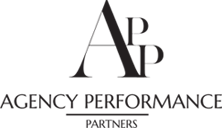Insurance Processes: Introduction
Do you know that one of the biggest requests that Agency Performance Partners receives is help with insurance processes? When we connect with the agency team they also indicate the agency needs to focus on communication, accountability, and processes.
Insurance processes and procedures may exist however, without training, accountability, and adoption processes are no more than a waste of time. As your agency embarks on creating and updating processes it’s important to take your time and roll them out the right way.
If your agency is not ready to hold people accountable to the process you may not want to spend one more minute on them. Garbage in garbage out – or worse garbage in garbage spreads.
You need to be prepared to roll them out and ensure everyone will be following them.
As we walk you through the top 10 Insurance Processes we recommend you adopt the following steps to tailor the processes for your agency:
- Identify a process team – learn what everyone is currently doing
- Ask your management system user group they may have some great suggestions
- Review our insurance process templates – there is no sense in recreating the wheel
- Meet and review how to build a process that puts the customer at the center of what you do
- Build the process, a one-page overview, and any scripts, templates, and checklists
- Have one member of the team test the process (there is no need to disrupt everyone)
- Roll out the process with training and a hands-on approach
- Identify the day the process becomes law and check and audit it’s use
Remember, processes aren’t just for new team members. For your reports and auditing to be on track you have to be ready and willing to hold everyone accountable to the processes.
Here are the 10 Insurance Processes we believe you should have:
- Answering the phone
- Payments
- File Documentation
- Endorsements
- Cancellations
- Proof of Insurance
- New Business
- Renewal
- Remarketing
- Claims
Let’s get started creating your agency processes!
10 Insurance Processes Your Agency Needs
If you need help building these processes, have no fear! We have our 10 Insurance Agency Processes you can purchase or subscribe to our school and get this plus all of our courses.
Process 1: How To Answer, Transfer, and Screen Calls
In too many insurance agencies everyone dives in and helps. Sounds like the perfect scenario right? Well, there is no better way. Do you want your highest-paid team member to take a payment? Probably not.
When there is a great deal of unclarity in how to route calls many times the best people to take the request are bi-passed. In addition, we often find resistance to taking phone calls and a great deal of pushback from the person who is transferring the call.
To create your phone answering insurance process you want to include the following:
- Call Greeting
- Warm Transfer
- How to Be a Gatekeeper
- Finding the Best Person to Take a Phone Call
As an independent agency, we are the least convenient way to buy insurance. So when we answer the phone it should be a warm and professional process that leads to an efficient and effective call.
Your first step to a great first impression is to map out your phone greeting process to drive success in your agency.
Process 2: Payment Insurance Process
Ohhh payments. The sneaky little thing that seems simple but ends up taking a great deal of time in an agency. You see, payments are a drop in everything item – we have to do it!
What we sometimes fail to see is basic math:
Payments are a 10-minute transaction
10 Minutes x 12 months
2 hour on 1 client on payments
You can do 8 renewal reviews in 2 hours. What yields more value?
The issue is payments seem so normal and natural to take and just do. But what if we can use payments as an opportunity to convert a client to EFT or Pay in Full and help us save some time that we can convert into growth activities?
In our payment process, we focus on the need to educate clients on streamlined payment processes by asking every time for the payment conversion! We include how to ask and what to say.
Process 3: File Documentation
Have you ever looked at a file and wondered what exactly is happening? It takes you lots of time to decode a team member’s notes.
Between abbreviations, unclarity, and everyone doing something different it can make your management system a mess. Imagine if everyone had a clear way of documenting a file, do you think that would save time and frustration?
Yes, it would! It would also increase your client experience.
So how can you get started? We believe you need to document a file every time you touch the file. That means if you contact an underwriter it’s documented. Send an email and attach it.
We want every agency to operate like you can win the lottery at lunch and just walk away because the files are documented in real time.
The reality is your agency needs a game plan of how to document and then a process to audit the adherence. When everyone is uniformly consistent you can minimize dropped balls and boost your agency’s customer experience.
Process 4: Endorsements
There are two schools of thought on endorsements. The first one is a chance to do it fast and easy. The second school of thought is that a change represents an opportunity.
Changes in a client’s insurance should be reviewed to ensure that other coverages should be adjusted. With the right endorsement checklist, you can use endorsements as an opportunity as well as make sure every team member (even the new team members) is handling endorsements accurately.
Our 10 Insurance Processes course includes a checklist!
One debate we often see in insurance is do we let the client know about any premium increases on the call (when we can) or do we let the carrier send the client the rate change.
I will say this – we strongly recommend that you talk about the rate on the endorsement call. Many clients may not be expecting a rate change, and when it arrives via mail, they do not have the best experience.
Instead, have the conversation when you have them on the phone and manage expectations to ensure the client has a great experience with your insurance agency.
Lastly, with an insurance endorsement, you should keep an open task in your management system to confirm the change when through and check the endorsement. This is a great way to protect the agency from an E&O claim.
Process 5: Cancellations
In your list of insurance processes, there are expirations, cancellations, and lost policies -OH MY!
For this blog, we will focus on clients who leave you and go elsewhere.
These lost policies may represent an opportunity for a win back. However, that all starts with a solid process of vetting the client when they leave the agency.
You want to consider paying attention to the client when they leave – if we do not notice them when they depart why would they come back? We start this process by thinking about who in your agency is best suited to stop a cancellation.
We want them to take that phone call and work to save them (if we want to keep them!).
If we can’t save them we will want to get important details:
- Best contact information
- Agreement to contact them next year
- Where they went to
- What triggered them to start shopping (Other than price – it’s always more than price)
- What they saved
Then you will want to nurture them through the year so when the renewal comes up you are ready to strike and convert a lost client back to an active client.
Process 6: Proof of Insurance
Certificates, auto ID cards, and evidence of insurance – all very routine yet very important. For many agencies, they have started investing in client portals.
This is a great way to help empower your client with self-service options and streamline your team. However, many agencies have struggled with getting client and team adoption on these portals.
Here is the reality for my doctor, accountant, and financial planner; they email me nothing – for security purposes. To earn adoption you need to add documents to these portals and require clients to go there for the documentation they need.
In addition, proof of insurance is an opportunity to review and improve coverages as well as to confirm contact information. We can use a request for proof of insurance as an opportunity or a transaction! Let’s make it an opportunity.
Process 7: New Business
So many insurance agencies have a quoting process, not a sales process. We find all the time that we learn how to quote but not sell. How can you tell you need a new business process – you email the quotes and do one follow-up.
When you build an insurance new business process you want to include the following:
- Ideal and Non-Ideal client (what will you reject?)
- Agency Standards what is the minimum policy you will write
- 4 & Score – targeting 4 policies per client
- Follow Up Process
- Presenting the Quote
- The break up when to walk way
Your new business process is key to ensuring you don’t need more new quotes instead you need a better process and a higher closing ratio.
Many agencies focus on a sales process for larger commercial accounts but the call in business also needs a clear and clean process or you may end up wasting valuable time on less than valuable clients.
Process 8: Renewal Process
Don’t poke the sleeping bear was how I learned about renewals. The agency philosophy was if we call them they may shop. Now this was many years ago – in today’s market BILLIONS of dollars are spent to alert your customers they have insurance options.
The game has changed and your insurance renewal processes need to as well.
The renewal process represents an opportunity for the following:
- Updated contact information
- Relationship building
- Coverage accuracy
- Client education
- Cross Selling
- Referrals
- Upselling
I like to call renewal reviews like penicillin; it cures all major agency challenges proactively. Our renewal process includes a proactive renewal review attempt for every client with a checklist to ensure accuracy and consistency.
In a hard insurance market being proactive is the only way to survive and thrive!
Process 9: Remarketing
Here is a dirty little secret, when you do proactive renewal reviews you decrease your remarketing load. Yes, you heard it here!
When you have insurance processes that lean on being more proactive you have more control over your day and your recommendations.
We strongly recommend that you start with the renewal process before you dive into the remarketing process.
Once you build your insurance processes and are ready to tackle remarketing there are a few items we want to make sure to include:
- Who qualifies or does not qualify for a remarket
- What carriers do you want to place business with
- Will you remarket monoline accounts (we say no but you may disagree)
- What coverage standards do you want to put in place
A remarketing is an opportunity to update accounts and improve their insurance situation. When you rush through a remarket you will find that we take old information rather than updating everything to gather the newest details.
Instead, use the remarket as an opportunity to improve both you and the client’s situation.
Process 10: Claims
Claims are the only time the client uses your product. For this reason alone we need an organized claims process that puts the client experience at the center of everything we do.
Claims represent a time when the client can be emotionally driven when they are interacting with your agency and team. When a client has a great claims experience they tell everyone, when they have a poor experience they tell everyone too.
One dirty little secret of claims is that the client often sees you and the carrier as the same so anything that may occur on the carrier level is now part of your challenge.
The great news is a ridiculously amazing claims process helps explain the difference between your agency and the carrier.
Insurance Processes Conclusion
Insurance processes are not a luxury item, they are a necessity. As your agency grows you need to have a procedure manual in place to help train new team members!
Spend the time to roll them out and get adoption. Insurance processes that aren’t used are no good.








